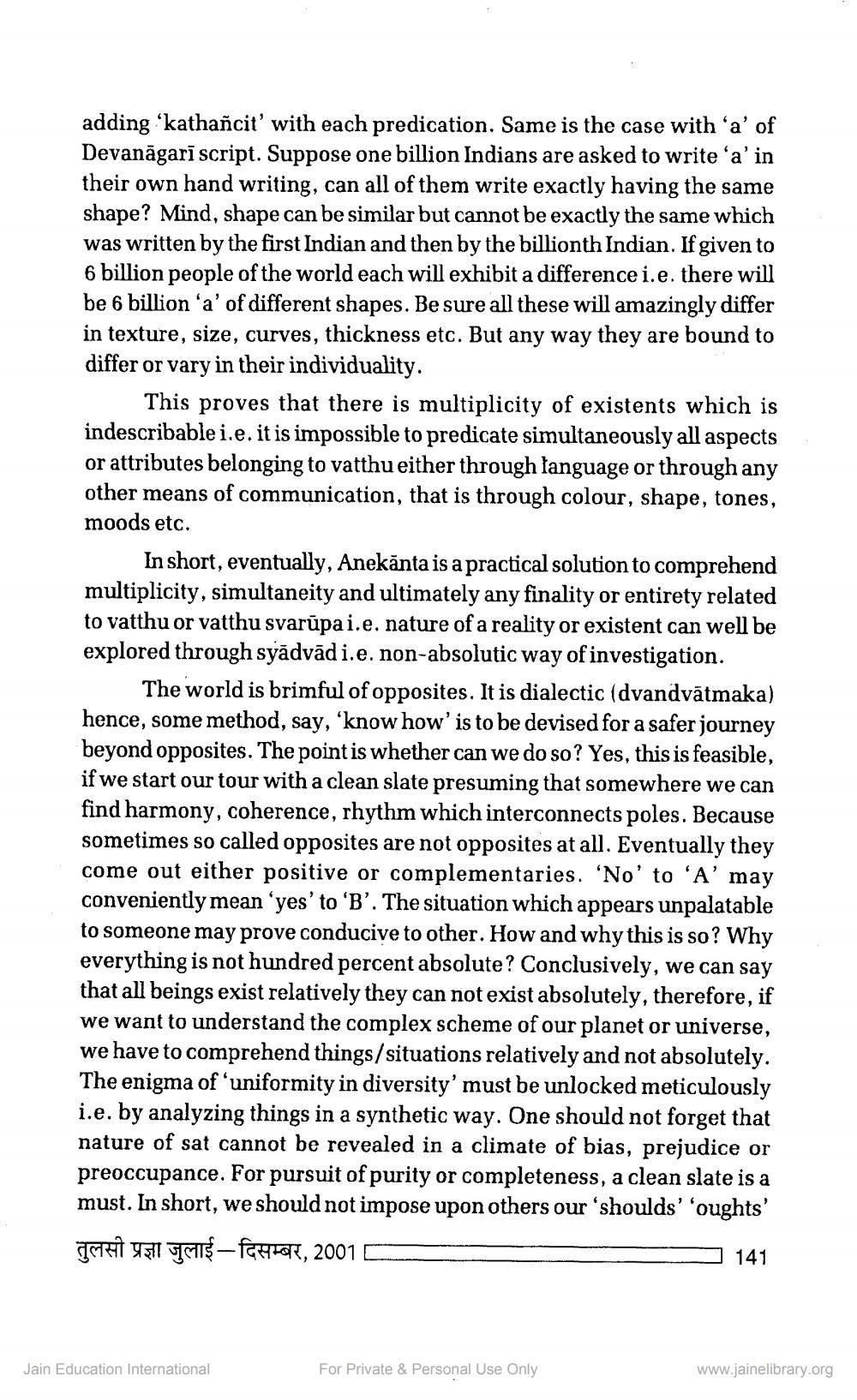________________
adding 'kathañcit' with each predication. Same is the case with 'a' of Devanāgarī script. Suppose one billion Indians are asked to write'a' in their own hand writing, can all of them write exactly having the same shape? Mind, shape can be similar but cannot be exactly the same which was written by the first Indian and then by the billionth Indian. If given to 6 billion people of the world each will exhibit a difference i.e. there will be 6 billion 'a' of different shapes. Be sure all these will amazingly differ in texture, size, curves, thickness etc. But any way they are bound to differ or vary in their individuality.
This proves that there is multiplicity of existents which is indescribable i.e. it is impossible to predicate simultaneously all aspects or attributes belonging to vatthu either through language or through any other means of communication, that is through colour, shape, tones, moods etc.
In short, eventually, Anekānta is a practical solution to comprehend multiplicity, simultaneity and ultimately any finality or entirety related to vatthu or vatthu svarūpa i.e. nature of a reality or existent can well be explored through syādvādi.e. non-absolutic way of investigation.
The world is brimful of opposites. It is dialectic (dvandvātmaka) hence, some method, say, 'know how' is to be devised for a safer journey beyond opposites. The point is whether can we do so? Yes, this is feasible, if we start our tour with a clean slate presuming that somewhere we can find harmony, coherence, rhythm which interconnects poles. Because sometimes so called opposites are not opposites at all. Eventually they come out either positive or complementaries. 'No' to 'A' may conveniently mean 'yes' to 'B'. The situation which appears unpalatable to someone may prove conducive to other. How and why this is so? Why everything is not hundred percent absolute ? Conclusively, we can say that all beings exist relatively they can not exist absolutely, therefore, if we want to understand the complex scheme of our planet or universe, we have to comprehend things/situations relatively and not absolutely. The enigma of 'uniformity in diversity' must be unlocked meticulously i.e. by analyzing things in a synthetic way. One should not forget that nature of sat cannot be revealed in a climate of bias, prejudice or preoccupance. For pursuit of purity or completeness, a clean slate is a must. In short, we should not impose upon others our 'shoulds' 'oughts' THAT Y511 IMIS- f&tykal, 2001
- 141
Jain Education International
For Private & Personal Use Only
www.jainelibrary.org




